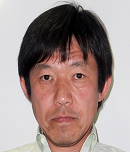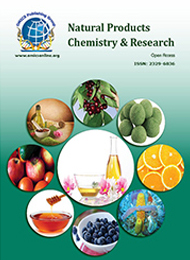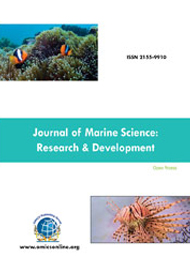Theme: Exploring Nature as a Source of Drugs
Natural Products 2016
ConferenceSeries Ltd Conferences invites all the participants from all over the world to attend 'International Conference and Exhibition on Marine Drugs and Natural Products' during July 25-27, 2016 in Melbourne, Australia which includes prompt keynote presentations, Oral talks, Poster presentations and Exhibitions.
Natural Products 2016 is a global platform for Marine Drugs and Natural Products recent discoveries and developments in Marine drugs discovery and natural produced drugs. A complete knowledge of a scientific discipline that described the Marine drug discovery and development and Marine Drugs and Natural Products now explores the use of Natural products in industry as well as healthcare. ConferenceSeries Ltd organizes a conference series of 1000+ Global Events inclusive of 1000+ Conferences, 500+ Upcoming and Previous Symposiums and Workshops in USA, Europe & Asia with support from 1000 more scientific societies and publishes 700+ Open access Journals which contains over 50000 eminent personalities, reputed scientists as editorial board members.
Track 1: Natural Products
Natural products are naturally occurring substances that are used to restore or maintain good health. They are often made from plants, animals, microorganisms and marine sources. They come in a wide variety of forms like tablets, capsules, tinctures, solutions, creams, ointments and drops. Natural products are used and marketed for a number of health reasons, like the prevention or treatment of an illness or condition, the reduction of health risks, or the maintenance of good health. They must be safe to be used as over-the-counter products. Products needing a prescription are regulated as drugs. Natural Products are used for various purposes like skin and hair care, dietary supplement, baby care, organic and natural herbal products.
Related Conferences:
6th International Conference on Traditional & Alternative Medicine September 14-16, 2016 Amsterdam, Netherlands; Holistic Medicine conferences 2016 July 14-15, 2016 Philadelphia, USA; 2nd Global Summit on Herbals and Natural Remedies, October 26-27, 2015 Chicago, USA; Global Summit on Plant Science, October 06-08, 2016, London, UK; 4th International Conference on Pharmacognosy, Phytochemistry & Natural Products, August 29-31, 2016 Sao Paulo, Brazil; 18th International Conference on Agronomy and Crop Sciences, September 15-16 2016, Rome, Italy; 7th International Crop Science Congress, August 14-19 2016, Beijing China; 9th Joint Natural Products Conference 2016, July 24-27, 2016, Copenhagen, Denmark; ICMPNP 2016: 18th International Conference on Medicinal Plants and Natural Products, June 9-10, 2016, San Francisco, USA; Natural Products, July 31 - August 5, 2016 Proctor Academy, Andover, NH. Australian Society of Plant Scientists (ASPS), American Society of Plant Biologists (ASPB), European Plant Science Organisation (EPSO), International Crop Science Society (ICSS), International Society for Horticultural Science (ISHS).
Track 2: Novel Sources and Approaches to Natural Products
Natural products (secondary metabolites) have been the most successful source of leads for potential drug discovery. Natural products have been well documented for their medicinal uses for thousands of years. Plants have evolved and adapted over millions of years to withstand bacteria, insects, fungi and weather to produce unique, structurally diverse secondary metabolites. Their ethnopharmacological properties have been used as a primary source of medicines for early drug discovery. Macro and micro fungi have been part of human life for thousands of years. They were used as food (mushrooms), in preparation of alcoholic beverages (yeasts), medication in traditional medicine and for cultural purposes.
Related Conferences: 2nd International Conference on Drug Discovery & Designing, Oct 31-Nov 02, 2016, Turkey; 4th International Conference on Pharmacognosy, Phytochemistry & Natural Products, August 29-31, 2016 Sao Paulo, Brazil; International Conference on Green Energy & Expo September 21-23, 2015 Orlando, FL, USA 10th Asia-Pacific Biotech Congress, July 25-27, 2016, Thailand; 9th Joint Natural Products Conference, July 24-27, 2016, Denmark; International Plant Breeding Congress and EUCARPIA-Oil and Protein Crops Section Conference November 01-05 Antalya ,Turkey; ICMPNP 2016 : 18th International Conference on Medicinal Plants and Natural Products, June 9-10,2016, USA; Global Summit on Plant Science, October 06-08, 2016, London, UK; Botanical Society of China (BSC), Chinese Society of Plant Biology (CSPB), Crop Science Society of China (CSSC), Indian Society of Plant Physiology (ISPP), Japanese Society for Plant Cell and Molecular Biology (JSPCMB)
Track 3: Methodologies for Natural Products
The investigation of biological and chemical properties of natural products for the past two centuries has not only produced drugs for the treatment of several diseases, but has instigated the development of synthetic organic chemistry and the arrival of medicinal chemistry as a major route to discover efficacious and novel therapeutic agents. Structural alteration of natural compounds or synthesis of novel compounds, based on designs following a natural compound scaffolding, have offered us a lot of vital new drugs in the fields of medicine, agriculture, and food spheres. Nature has provided a fascinating array of chemical structures in the form of bioactive secondary metabolites.
Related Conferences: Global Summit on Plant Science, October 06-08, 2016, London, UK; 4th International Conference on Pharmacognosy, Phytochemistry & Natural Products, August 29-31, 2016 Sao Paulo, Brazil;2nd Global Summit on Herbals and Natural Remedies, October 17-19, 2016 Kuala Lumpur, Malaysia; 3rd International Conference and Exhibition on Pharmacology and Ethnopharmacology Conference, March 27-29, 2017 Orlando, USA; 10th International Conference on Pharmaceutics & Novel Drug Delivery Systems, March 13-15, 2017 London, UK; Exploring the Therapeutic Potential of Natural Products and Biologically Active Compounds through Chemical and Biological Technologies conferences, July 31-August 5, 2016, Andover, NH. Natural Products July 31 - August 5, 2016. NH; 3rd International Conference on Agriculture and Food Engineering, August 23-25 2016, Kuala Lumpur, Malaysia; 18th International Conference on Pharmacognosy, Phytochemistry and Natural Products, November 28 - 29, 2016, Istanbul, Turkey; 18th International Conference on Agroforestry and Food Security, August 11-12, 2016, Barcelona, Spain; Japanese Society of Plant Physiologists (JSPP), American Society of Plant Biologists (ASPB), Australian Society of Plant Scientists (ASPS), Argentinean Society of Plant Physiology (SAFV), American Society of Agronomy (ASA)
Track 4: Natural Products Drug Discovery
Classical natural product chemistry methodologies enabled a vast array of bioactive secondary metabolites from terrestrial and marine sources to be discovered. Many of these natural products have gone on to become current drug candidates. An advance in technology and sensitive instrumentation for the rapid identification of novel bioactive natural products and structure elucidation continues to improve the natural product discovery process. Chemistry has indeed revolutionized the development of novel active chemical leads resulting in the synthesis of structural analogues. Natural products constitute a key source of pharmacologically active ingredients in a variety of novel agents with therapeutic potential in a wide range of diseases. Pharmaceuticals containing natural products or compounds derived from natural product scaffolds or templates have to undergo the same stringent approval process as drugs obtained from purely synthetic origin.
Related Conferences: 2nd Industrial Pharmacy Conference, April 24-25, 2017 Frankfurt, Germany; Asia Pacific Drug Formulation & Bioavailability, June 06-08, 2016 Beijing, China; 6th International Conference on Traditional & Alternative Medicine, September 14-16, 2016, Amsterdam, Netherlands; 2nd International Conference on Drug Discovery & Designing, October 31-November 02, 2016, Turkey; World Congress on Drug Discovery & Therapy 2016, August 22-25, 2016, Boston, USA; . 29th International Symposium on the Chemistry of Natural Products and the 9th International Conference on Biodiversity (ISCNP-29 & ICOB-9), September 24 - September 27, 2016 Turkey, Plant Omics and Biotechnology for Human Health, November 21 - November 24, 2016, Gent, Belgium; 9th Joint Natural Products Conference, July 24-27, 2016, Denmark; Australian Society of Plant Scientists (ASPS), Argentinean Society of Plant Physiology (SAFV), American Society of Agronomy (ASA), African Crop Science Society (ACSS), Brazilian Society of Plant Physiology (SBFV)
Track 5: Phytomedicine and Phytochemistry
The pharmaceutical industry’s interest in natural products diminished with the advent of such promising new technologies like combinatorial chemistry (CC) and high throughput screening (HTS). The prospect of such disciplines, aimed at accelerating drug discovery efforts, led some companies to dismiss their natural product programs. Combinatorial chemistry employs parallel synthesis techniques allowing the creation of libraries containing hundreds of thousands of compounds, whereas HTS allows rapid testing of large numbers of compounds. A significant number of drugs have been derived from plants that were traditionally employed in ethnomedicine or ethnobotany (the use of plants by humans as medicine as in Ayurvedic or Traditional Chinese Medicine), while others were discovered initially (through random screening of plant extracts in animals) or later, by determining their in vitro activity against HIV or cancer cell lines.
Related Conferences: Asia Pacific Mass Spectrometry Congress, October 13-15, 2016 Kuala Lumpur, Malaysia; 2nd International Conference on Drug Discovery & Designing, Oct 31-Nov 02, 2016, Turkey; 4th International Conference on Pharmacognosy, Phytochemistry & Natural Products, August 29-31, 2016 Sao Paulo, Brazil; 10th Asia-Pacific Biotech Congress, July 25-27, 2016, Thailand; 10th International Conference on Pharmaceutics & Novel Drug Delivery Systems, March 13-15, 2017 London, UK; 2nd International Conference and Exhibition on Pharmacology and Ethnopharmacology Conference, March 27-29, 2017 Orlando, USA; Plant Omics and Biotechnology for Human Health, November 21 - November 24, 2016, Gent, Belgium; 9th Joint Natural Products Conference, July 24-27, 2016, Denmark; 18th International Conference on Agroforestry and Agriculture, August 11-12 2016, Barcelona, Spain; ICMPNP 2016 : 18th International Conference on Medicinal Plants and Natural Products, June 9-10,2016, USA; 7th International Crop Science Congress, August 14-19 2016, Beijing China; Argentinean Society of Plant Physiology (SAFV), American Society of Agronomy (ASA), African Crop Science Society (ACSS), Brazilian Society of Plant Physiology (SBFV), Canadian Society of Plant Biologists (CSPB).
Track 6: Natural Products as Tool
The valuable medicinal properties of different plants are due to presence of several constituents i.e. saponines, tannins, alkaloids, alkenyl phenols, glycoalkaloids, flavonoids, sesquiterpenes lactones, terpenoids and phorbol esters. Among them some are act as synergistic and enhance the bioactivity of other compounds. Natural products (and conventional medicines) offer great anticipation in the identification of bioactive compounds and their development into drugs for the treatment of inflammatory diseases. Previously, the plant medicines were dispensed in the form of crude drugs like tinctures, teas, powders, poultices, and other herbal preparations. This eventually serves as the basis of the current modern drug discovery.
Related Conferences: 2nd Global Summit on Herbals and Natural Remedies, October 17-19, 2016 Kuala Lumpur, Malaysia; 6th Conference and Exhibition on Traditional & Alternative Medicine, September 14-16, 2016 Amsterdam, Netherlands; Cancer Diagnostics Conference & Expo. June 13-15, 2016 in Rome, Italy; 10th Global Oncologists Annual Meeting. June 11-13 2016, Cologne, Germany; 11th Asia-Pacific Oncologists Annual Meeting. July 11-13, 2016 at Kuala Lumpur, Malaysia; 1st Conference on Natural Products for Cancer Prevention and Therapy, August 31 - September 02, 2016, Turkey; World Congress on Drug Discovery & Therapy 2016, August 22-25, 2016, Boston, USA; ICMPNP 2016 : 18th Conference on Medicinal Plants and Natural Products, June 9-10,2016, San Francisco, USA; ICNPDD 2016 : 18th Conference on Natural Products and Drug Discovery, February 12 - 13, 2017, Kuala Lumpur, Malaysia; 5th Asia-Pacific Congress on Natural Sciences & Engineering (APICENS 2016), 02 - 04 Aug 2016 Okinawa, Japan; Brazilian Society of Plant Physiology (SBFV), Canadian Society of Plant Biologists (CSPB), Chile’s National Network of Plant Biologists (CNNPB), Crop Science Society of America (CSSA), European Association for Research on Plant Breeding (EUCARPIA).
Track 7: Natural products as Anti-Cancer Drugs
Dietary sources of natural products are assumed to have anti-cancer benefits include fruits, vegetables and spices yielding biologically active components such as curcumin, resveratrol, cucurbitacins, isoflavones, saponins, phytosterols, lycopene, and many others. A number of these are gaining importance as adjuvant anti-cancer agents with curcumin, resveratrol and cucurbitacins having activity reported against cancer stem cells. 39 natural compounds from marine species, mostly invertebrates, and 10 from microorganisms, mostly from bacteria of the Streptomyces genus, as potential new anti-cancer agents. It is assumed that many prokaryotic and eukaryotic natural product sources may still reveal a number of valuable anti-cancer compounds in the future and even ancient animal species have been suggested as a particularly valuable source.
Related Conferences: 2nd Global Summit on Herbals, October 17-19, 2016 Kuala Lumpur, Malaysia & 2nd Global Summit on Natural Remedies, October 17-19, 2016 Kuala Lumpur, Malaysia; 6th International Conference on Traditional & Alternative Medicine, September14-16, 2016 Amsterdam, Netherlands; Cancer Diagnostics Conference & Expo June 13-15, 2016 in Rome, Italy; 10th Global Oncologists Annual Meeting. June 11-13, 2016, Cologne, Germany; 11th Asia-Pacific Oncologists Annual Meeting. July 11-13, 2016 at Kuala Lumpur, Malaysia; 1st International Conference on Natural Products for Cancer Prevention and Therapy, August 31 - September 02, 2016, Turkey World Congress on Drug Discovery & Therapy 2016, August 22-25, 2016, Boston, USA; ICMPNP 2016 : 18th International Conference on Medicinal Plants and Natural Products, June 9-10,2016, San Francisco, USA; ICNPDD 2016 : 18th International Conference on Natural Products and Drug Discovery, February 12 - 13, 2017, Kuala Lumpur, Malaysia; 5th Asia-Pacific Congress on Natural Sciences & Engineering (APICENS 2016), 02 - 04 Aug 2016 Okinawa, Japan. Japanese Society of Plant Physiologists (JSPP), American Society of Plant Biologists (ASPB), Australian Society of Plant Scientists (ASPS), Argentinean Society of Plant Physiology (SAFV), American Society of Agronomy (ASA), African Crop Science Society (ACSS).
Track 8: Marine: The Ultimate Source of Bioactives and Drug Metabolites
Many marine natural products appear to arise from multi-functional enzymes that are also present in terrestrial systems, exhibiting a cross phylum activity with terrestrial biota. However, a large number of marine derived compounds also possess a substantial amount of functional groups, which were not previously described from terrestrial metabolites. They range from derivatives of amino acids and nucleosides to macrolides, porphyrins, terpenoids, aliphatic cyclic peroxides, and sterols. Microorganisms (amongst them mostly bacteria and fungi) have played an important role in providing new structures, like antibiotics for drug discovery and development. The terrestrial microbial populations are immensely diverse which is also reflected in the number of compounds and metabolites isolated from these microorganisms. Besides bacteria, marine fungi and deep-sea hydrothermal vent microorganisms are reported to produce bioactive compounds and metabolites.
Related Conferences: 4th International Conference on Oceanography & Marine Biology, July 18-20, 2016 Brisbane, Australia; 2nd Global Geologists Annual Meeting, July 21-22, 2016 Brisbane, Australia; International Conference on Water Microbiology & Novel Technologies, July 18-20, 2016 Chicago, USA; 3rd International Conference on Geology, Mar 23-24, 2017 Orlando, USA; International Conference on Food Microbiology, August 08-10, 2016 Birmingham, UK. 18th International Conference on Polar Ocean and Marine Science August 4 - 5, 2016 Vancouver, Canada; 13th International Coral Reef Symposium June 19-24, 2016 Hawai’i, USA; Gordon Research Conference on Ocean Biogeochemistry June 12-17, 2016 Hong Kong, China; 8th International Conferences on Marine Pollution and Ecotoxicology June 20-24, 2016 Hong Kong; OCEANS 2016, September 19-22, 2016, California, United States. Marina Industries Association (MIA), Australian Marine Sciences Association (AMSA), Boating Industries Alliance Australia (BIAA), Australian Shipowners Association (ASA), Australian Marine Conservation Society.
Track 9: Marine Biotechnology
Marine (or blue) biotechnology encompasses the applications of biotechnology tools on marine resources. Marine biotechnology encompasses those efforts that involve the marine resources of the world, either as the source or target of biotechnology applications. Marine biotechnology may include techniques such as bioprocessing, bioharvesting, bioprospecting, bioremediation, using bioreactors etc (so called process biotechnology techniques); aquaculture/fisheries; gene, protein, or other molecule based techniques; while applications may include: health, food, cosmetology, aquaculture & agriculture, fisheries, manufacturing, environmental remediation, biofilms and corrosion, biomaterials, research tools etc. Therefore, marine biotechnology has a horizontal scope encompassing very different applications, for all of which the marine environment is providing the resources.
Related Conferences: 10th Asia-Pacific Biotech Congress, July 25-27, 2016 AVANI Atrium, Bangkok, Thailand.12th Biotechnology Congress, November 14-15, 2016 San Francisco, USA; International Conference on Food Microbiology, August 08-10, 2016 Birmingham, UK; 2nd International Conference and Exhibition on Pharmacology and Ethnopharmacology Conference, March 27-29, 2017 Orlando, USA; 3rd International Conference on Geology, March 23-24, 2017 Orlando, USA; ICMBB 2016 : 18th International Conference on Marine Biotechnology and Bioprocessing, December 5 - 6, 2016. Sydney, Australia; 11th International Marine Biotechnology Conferences (IMBC) 2016, August 29 - September 2, 2016, Baltimore, Maryland; 8th International Conferences on Marine Pollution and Ecotoxicology June 20-24, 2016 Hong Kong; 18th International Conference on Marine Science and Technology August 4 - 5, 2016 Vancouver, Canada; 13th International Coral Reef Symposium June 19-24, 2016 Hawai’i, USA. Australian Marine Conservation Society, Maritime Law Association of Australia & New Zealand (MLAANZ), Marine Queensland, Australian International Marine Export Group (AIMEX), Australian Marine Environment Protection,
Track 10: Marine Natural Products in Drug Discovery
Drug discovery represents one of the most promising and highly visible outcomes of marine biotechnology research. Biochemicals produced by marine invertebrates, algae and bacteria, are very different than those from related terrestrial organisms and thus offer great potential as new classes of medicines. To date, examples of marine-derived drugs include antibiotics from fungi, two closely related compounds from a sponge that treat cancer and the herpes virus, and a neurotoxin from a snail that has painkiller properties making it 10,000 times more potent than morphine without the side effects. However, there are several more marine-derived compounds currently in clinical trials and it is likely that many more will advance to the clinic as more scientists look to the sea for these biotechnological uses. In addition to new medicines, other uses for marine-derived compounds include: cosmetics (algae, crustacean and sea fan compounds), nutritional supplements (algae and fish compounds), artificial bone (corals), and industrial applications (fluorescent compounds from jellyfish, novel glues from mussels, and heat resistant enzymes from deep-sea bacteria).
Related Conferences; 4th Conference on Oceanography & Marine Biology, July 18-20, 2016 Brisbane, Australia; Conference on Water Microbiology & Novel Technologies, July 18-20, 2016 Chicago, USA; 2nd Conference and Expo on Drug Discovery & Designing, October 31-Nov 02, 2016 Istanbul, Turkey; 2nd Industrial Pharmacy Conference, April 24-25, 2017 Frankfurt, Germany; Asia Pacific Drug Formulation & Bioavailability Congress, June 06-08, 2016 Beijing, China; 18th Conference on Polar Ocean and Marine Science August 4 - 5, 2016 Vancouver, Canada; Gordon Research Conference on Ocean Biogeochemistry June 12-17, 2016 Hong Kong, China, World Conference on Climate Change October 24-26, 2016 Valencia, Spain; 18th Conference on Marine Science and Technology August 4 - 5, 2016 Vancouver, Canada; Bacterial Protein Secretion Conference, November 09- 12, 2016, Florida, United Kingdom. Brazilian Society of Plant Physiology (SBFV), Canadian Society of Plant Biologists (CSPB), Chile’s National Network of Plant Biologists (CNNPB), Marina Industries Association (MIA), Australian Marine Sciences Association.
Track 11: Development of Marine Drugs and Natural Products
Natural products are believed to have the advantage of having enormous structural and chemical diversity, increased protein binding characteristics (due to complex structure) and specific biological activity. Also these serve as good lead compounds suitable for further modification. Bioactive compounds from marine flora and fauna have extensive past and present use in the treatment of many diseases and serve as compounds of interest both in their natural form and as templates for synthetic modification. Several molecules isolated from various marine organisms (microorganisms, algae, fungi, invertebrates, and vertebrates) are currently under study at an advanced stage of clinical trials, some of them have already been marketed as drugs.
Related Conferences: 2nd Global Summit on Plant Science October 06-08, 2016, London, UK; 2nd Global Geologists Annual Meeting, July 21-22, 2016 Brisbane, Australia; Conference on Water Microbiology & Novel Technologies, July 18-20, 2016 Chicago, USA; 3rd Conference on Geology, March 23-24, 2017 Orlando, USA; 5th Conference on Earth Science & Climate Change, July 25-27, 2016 Bangkok, Thailand; 8th Conferences on Marine Pollution and Ecotoxicology June 20-24, 2016 Hong Kong; 18th Conference on Marine Science and Technology August 4 - 5, 2016 Vancouver, Canada; 13th Coral Reef Symposium June 19-24, 2016 Hawai’i, USA; 5th conference on Pharmaceutical Sciences, August 10-11, 2016.Dubai, U.A.E. Chile’s National Network of Plant Biologists (CNNPB), Crop Science Society of America (CSSA), European Association for Research on Plant Breeding (EUCARPIA), European Plant Science Organization (EPSO), Federation of European Societies of Plant Biology (FESPB).
Track 12: Biologically Active Natural Products and Drugs
Natural Products are the source of numerous pharmaceutical and agrochemicals agents, and it is reasonable to believe that there are additional agents in existence that remain undiscovered. These natural products are probably defence chemicals targeting and inhibiting the cell division processes of invading plant pathogens. The biofuels produced from the renewable resources could help to minimize the fossil fuel burning and CO2 production. Biofuel produced from biomass such as plants or organic waste could help to reduce both the world’s dependence on oil and CO2 production. These biofuels have the potential to cut CO2 emission because the plants they are made from use CO2 as they grow. Biofuels and bioproducts produced from plant biomass would mitigate global warming. This may due to the CO2 released in burning equals the CO2 tied up by the plant during photosynthesis and thus does not increase the net CO2 in the atmosphere.
Related Conferences: 2nd Global Summit on Aquaculture & Fisheries, July 11-13, 2016 Kuala Lumpur, Malaysia; Conference on Food Microbiology, August 08-10, 2016 Birmingham, UK; 2nd Conference on Biofuels & Bioenergy, August 25-27, 2016 Sao Paulo, Brazil; Global Summit on Plant Science, October 06-08, 2016, London, UK; Global Summit on Biomass, October 10-12, 2016 Dubai, UAE; ICMPNP 2016 : 18th Conference on Medicinal Plants and Natural Products, June 9-10,2016, San Francisco, USA; OCEANS 2016, Sep 19 -22, 2016, California, United States; Bacterial Protein Secretion Conference, November 09 -12,2016, Florida, U.K.; Marine Microbes, June 19-24, 2016, Girona, Spain; 18th Conference on Polar Ocean and Marine Science August 4 - 5, 2016 Vancouver, Canada; 18th Conference on Marine Biology and Biological Oceanography August 4 - 5, 2016 Vancouver, Canada. European Plant Science Organization (EPSO), Federation of European Societies of Plant Biology (FESPB), International Society of Plant Pathology (ISPP), International Crop Science Society (ICSS), International Society for Horticultural Science (ISHS).
Track 13: Bioactive Natural Products from Marine Bacteria
Marine bacteria have been proven to be a profound resource on the development of natural product chemistry and upon the medical sciences. The improvement of natural products-based screening, rather than relying on synthetic sources, has been the aim of current pharmaceutical research and development. Alternative strategies to consider include the identification of potential new antibiotics from commercial crude bacterial fermentations. Recent research progresses reported that many bioactive natural products from marine invertebrates have striking similarities to metabolites of their associated microorganisms including bacteria. Compared with terrestrial organisms, the secondary metabolites produced by marine organisms have more novel and unique structures owing to the complex living circumstance and diversity of species, and the bioactivities are much stronger. The study of marine bacteria and their potential role in the production of metabolites is becoming a new topic for research. Several investigations have supplied an increasing number of biologically active and structurally unique compounds. Bacteria and other micro-organisms are ubiquitous in the marine environment. They are taxonomically diverse, biologically active, and colonize all marine habitats, from the deep oceans to the shallowest estuaries. It has been estimated that the majority of bacteria in natural aquatic ecosystems are organized in biofilms.
Related Conferences: 4th Conference on Oceanography & Marine Biology, July 18-20, 2016 Brisbane, Australia; 2nd Global Geologists Annual Meeting, July 21-22, 2016 Brisbane, Australia; 10th Asia-Pacific Biotech Congress, July 25-27, 2016 Atrium, Bangkok, Thailand; 3rd Conference on Geology, Mar 23-24, 2017 Orlando, USA; 2nd Global Summit on Aquaculture & Fisheries, July 11-13, 2016 Kuala Lumpur, Malaysia; Bacterial Protein Secretion Conference, November 09 -12,2016, Florida, U.K.; Marine Microbes, June 19-24, 2016, Girona, Spain; 18th Conference on Polar Ocean and Marine Science August 4 - 5, 2016 Vancouver, Canada; 18th Conference on Marine Biology and Biological Oceanography August 4 - 5, 2016 Vancouver, Canada; Marine Conservation Congress 30 July - 3 August, 2016 St. John's, Newfoundland and Labrador, Canada; 6th Symposium on Deep-Sea Corals, September 11-16, 2016, Boston, MAMaritime Law Association of Australia & New Zealand (MLAANZ), Marine Queensland, Australian International Marine Export Group (AIMEX), Australian Marine Environment Protection, International Society for Horticultural Science (ISHS).
Track 14: Marine Probiotics and Prebiotics
Marine Probiotics are microorganisms that are believed to provide health benefits when consumed. The term probiotic is currently used to name ingested microorganism associated with beneficial effects to humans and animals. We usually think of bacteria as something that causes diseases. But your body is full of bacteria, both good and bad. Probiotics are often called "good" or "helpful" bacteria because they help keep your gut healthy. Probiotics are naturally found in your body. We can find them in some foods and supplements. Lactobacillus and Bifidobacterium are the most common probiotic bacteria. The Lactobacillus genus has 18 different bacteria strains, while the Bifidobacterium genus consists of eight strains.
Related Conferences: 5th International Conference on Probiotics, Functional and Baby Foods, September 26-28, 2016 Orlando, USA. 2nd International Conference on Nutraceuticals and Nutrition Supplements, July 18-20, 2016 Bangkok, Thailand. 5th European Nutrition and Dietetics Conference, June 16-18, 2016, Rome, Italy, 6th International Conference on Nutrition, September 14-16, 2016, Texas, USA. 2nd World Congress on Beneficial Microbes: Food, Pharma, Aqua & Beverages Industry, September 22-24, 2016 Phoenix, USA. International Scientific Conference on Probiotics and Prebiotics, June 21 – 23, 2016 Budapest, Hungary. 5th Beneficial Microbes Conference, October 10-12, 2016 Amsterdam, Netherlands. 100 Years of Phagocytes, September 19-22, 2016, Sicily, Italy. 4th Microbiome R&D Conference And Business Collaboration Forum USA, October 3-October 4, 2016, California, USA. Gut Microbiota and Probiotics Throughout the Lifespan: Metabolic and Brain Function, September 15-16, 2016, Massachusetts, USA.
Track 15: A Promising Future for Marine Drugs and Natural Products
Natural products, although a valuable and precious resource, also come with their fair share of challenges in a variety of aspects. As mentioned before, one of the major issues concerning the use of natural products are the difficulties associated with obtaining sufficient amounts of material pure enough for discovery and development activities. If a compound is derived from a plant growing only in small quantities or remote locations or a marine organisms residing in great depth or difficult to access regions, re-supply becomes a problem. The threat of losing potentially valuable natural sources of pharmacologically active ingredients is constantly increasing due to the threat of extinction by deforestation of large landmasses and environmental pollution in remote areas as well as global warming. It is estimated that about 70% of the supply of herbal raw material for Ayurveda medicine and other homeopathic medicine in India comes from the wild. To meet the increasing demand for raw material, to conserve wild resources, and to reduce the potential variability in the active ingredient content in medicinal plants from different collection areas, it is important to implement more controlled cultivation programs to ensure quality and to protect resources
Related Conferences: Global Summit on Herbals, October 26-27, 2015 Chicago, USA & Global Summit on Natural Remedies, October 26-27, 2015 Chicago, USA; 6th Conference and Exhibition on Traditional & Alternative Medicine, September 14-16, 2016 Amsterdam, Netherlands; 3rd International Conference and Exhibition on Pharmacology and Ethnopharmacology Conference, March 27-29, 2017 Orlando, USA; 5th Conference on Agriculture and Horticulture, June 27-29, 2016 Cape Town, South Africa; Global Summit on Plant Science, October 06-08, 2016, London, UK; 18th Conference on Polar Ocean and Marine Science August 4 - 5, 2016 Vancouver, Canada; Gordon Research Conference on Ocean Biogeochemistry June 12-17, 2016 Hong Kong, China; 5th Conference on Pharmaceutical Sciences, August 10-11, 2016, Dubai, U.A.E; 9th Joint Natural Products Conference 2016, July 24-27, 2016, Copenhagen, Denmark; 11th Congress of Plant Molecular Biology (IPMB) October 25 - 30, 2015 Foz do Iguazu, Brazil; Plant Genomics Congress September 14-15, 2016 St. Louis, USA; ), Australian Marine Sciences Association (AMSA), Boating Industries Alliance Australia (BIAA), Australian Shipowners Association (ASA), Australian Marine Conservation Society, Maritime Law Association of Australia & New Zealand (MLAANZ).
ConferenceSeries Ltd organizes a conference series of 3000+ Global Events inclusive of 600+ Conferences every year across USA, Europe & Asia with support from 1000 more scientific societies and publishes 700+ Open access journals which contain over 70000 eminent personalities, reputed scientists as editorial board members.
ConferenceSeries Ltd invites all the participants across the globe to attend the ‘’International Conference and Exhibition on Marine Drugs and Natural Products” Marine Drugs and Natural Products conveys recent discoveries and developments in Marine drugs discovery and natural produced drugs. A complete knowledge of a scientific discipline that described the Marine drug discovery and development and Marine Drugs and Natural Products now explores the use of Natural products in industry as well as healthcare.
Marine Drugs and Natural Products 2016 is the chemistry of marine organisms is relatively unexplored and represents a vast resource for new medicines to combat major diseases such as cancer, AIDS or malaria. Research typically focuses on sessile organisms or slow moving animals because of their inherent need for chemical defenses. Standard research involves an extraction of the organism in a suitable solvent followed by either an assay of this crude extract for a particular disease target or a rationally guided isolation of new chemical compounds using standard chromatography techniques.
Moreover, it is likely that for every compound that does make it to the market, a better drug with distinct chemistry, improved bioavailability and less unwanted side effects can be found either in chemical libraries or among the much larger number and diversity of natural products.
In recent years, marine natural product bioprospecting has yielded a considerable number of drug candidates. Most of these molecules are still in preclinical or early clinical development but some are already on the market, such as cytarabine, or are predicted to be approved soon, such as ET743 (YondelisTM). Research into the ecology of marine natural products has shown that many of these compounds function as chemical weapons and have evolved into highly potent inhibitors of physiological processes in the prey, predators or competitors of the marine organisms that use them. Some of the natural products isolated from marine invertebrates have been shown to be, or are suspected to be, of microbial origin and this is now thought to be the case for the majority of such molecules. Marine microorganisms, whose immense genetic and biochemical diversity is only beginning to be appreciated, look likely to become a rich source of novel chemical entities for the discovery of more effective drugs.
Summary:
Natural products play an important role in drug discovery. About more than 50 percent of FDA-approved drugs were Natural products or natural products derivatives.
For thousands of year’s natural products have played a very important role in health care and prevention of diseases. It is estimated that about 70% of the supply of herbal raw material for Ayurveda and other homeopathic medicines in India comes from the wild. To meet the increasing demand for raw material, to conserve wild resources, and to reduce the potential variability in the active ingredient content in medicinal plants from different collection areas, it is important to implement more controlled cultivation programs to ensure quality and to protect resources.
The global market for botanical and plant-derived drugs was valued at $23.2 billion in 2013 and $24.4 billion in 2014. This total market is expected to reach $25.6 billion in 2015 and nearly $35.4 billion in 2020, with a compound annual growth rate (CAGR) of 6.6% from 2015 to 2020.
Scope and Importance:
Investigations into natural products have recently regained prominence with the increasing understanding of their biological significance and increasing recognition of the origin and function of their structural diversity. This issue highlights some of the major questions and advances in natural products research, from recent synthetic approaches to access complicated natural products to a new educational program which utilizes natural products as a basis for discovery-based research.
Why Melbourne?
Melbourne is recognised internationally as a centre of excellence in medical research including clinical trials, stem cell research and cancer therapies. In 2012, 164 establishments (businesses and organisations) in the Biotech sector provided 30,578 jobs. The sector has total output worth $15.1 billion and contributes $10.1 billion in Gross Local Product to the City of Melbourne economy. The City of Melbourne has a role as a ‘capital city’, where we work cooperatively with other councils and stakeholders to ensure ongoing support and promotion for the industry. Melbourne’s most famous beauty export, Aesop continues to lead the way in environmentally sensitive beauty products that also look, smell and feel divine. Their concept stores also look a treat. Visit Melbourne’s Gertrude Street or Flinders Lane to get a sense of this beauty label’s commitment to style.
With significant developments in infrastructure and services taking place throughout the country, the EIBTM Australian delegation – Business Events Sydney, The Star, Melbourne Convention and Visitor Bureau, Adelaide Convention Centre, Arinex, and Cairns Convention Centre – is joining forces to showcase Australia to delegates from over 150 countries.
Melbourne was selected as host due to the city’s reputation as an international leader in medical innovation, especially in research, prevention and clinical care. The city was also selected as host thanks to its world class facilities and infrastructure including the award-winning Melbourne Convention and Exhibition Centre.
Greater Melbourne is home to 27 leading biotechnology research institutes, seven major teaching hospitals and nine universities. It is also home to highly skilled scientists, entrepreneurs and a wide range of expert business support services.
Conference Highlights
- Natural Products
- New Sources and Approaches to Natural Products
- Methodologies for Natural Products
- Natural Products Drug Discovery
- Phytomedicine and Phytochemistry
- Natural Products as Tool
- Natural Products as Anti-Cancer Drugs
- Marine: The Ultimate Source of Bioactives and Drug Metabolites
- Marine Biotechnology
- Marine Natural Products Drug Discovery
- Development of Marine Drugs and Natural Products
- Biologically Active Natural Products
- Bioactive Natural Products from Marine Bacteria
- A Promising Future for Marine Drugs and Natural Products
Societies Associated with Natural Products:
City Statistics (Melbourne):
- Australian Natural Therapists Association
- Australian Traditional Medicine Society Ltd.
- The Natural Health Society
- The Wilderness Society
- The Australian Timber Flooring Association
Major Associations around Asia Pacific
- Botanical Society of China (BSC)
- Chinese Society of Plant Biology (CSPB)
- Crop Science Society of China (CSSC)
- Genetics Society of China (GSC)
- Indian Society of Plant Physiology (ISPP)
- Japanese Society for Plant Cell and Molecular Biology (JSPCMB)
- Japanese Society of Plant Physiologists (JSPP)
Major Associations around the Globe
- American Society of Plant Biologists (ASPB)
- Australian Society of Plant Scientists (ASPS)
- Argentinean Society of Plant Physiology (SAFV)
- American Society of Agronomy (ASA)
- African Crop Science Society (ACSS)
- Brazilian Society of Plant Physiology (SBFV)
- Canadian Society of Plant Biologists (CSPB)
- Chile’s National Network of Plant Biologists (CNNPB)
- Crop Science Society of America (CSSA)
- European Association for Research on Plant Breeding (EUCARPIA)
- European Plant Science Organisation (EPSO)
- Federation of European Societies of Plant Biology (FESPB)
- International Society of Plant Pathology (ISPP)
- International Crop Science Society (ICSS)
- International Society for Horticultural Science (ISHS)
- Irish Plant Scientists' Association (IPSA)
- International Society for Plant Molecular Biology (ISPMB)
- International Christian Association of Natural Therapists Ltd
- Korean Society of Plant Biologists (KSPB)
- New Zealand Society of Plant Biologists (NZSPB)
Target Audience:
The target audience will from the associations and societies of Australia, students and professors from the academia of the various universities, researchers, scientists, experts, business delegates in the field of Pharmacognosy, Marine and Natural Sciences.
Global Market Analysis for Marine Drugs and Natural Products:
In 2010, according to the Nutrition Business Journal, sales of natural products grew 6 percent to $117 billion. Below are additional statistics from 2010 regarding natural products:
- Natural/organic food items totalled $39 billion, an 8.3 percent increase from 2009.
- Functional foods made up over one-third of the entire natural products market share, at $39 billion.
- Supplement sales in natural product stores were up 4.4 percent to $28 billion.
- Natural products consumers are often motivated not only by their own health, but making buying choices that lead to sustainability of the environment.
Global Market Analysis of Marine derived pharmaceuticals:
The global market for marine-derived drugs by type was around $4.8 billion in 2011, which is expected to be around $5.3 billion in 2012. This global market is forecasted to reach $8.6 billion by 2016 at a compound annual growth rate (CAGR) of 12.5% for the five year period of 2011 to 2016.
Global Market Analysis of Botanical and Plant-derived Drugs
The global botanical and plant-derived drug market was valued at $21.4 billion in 2011 and should reach $22.1 billion in 2012. Total market value is expected to reach $26.6 billion in 2017 after increasing at a five-year compound annual growth rate (CAGR) of 3.7%.
Market Analysis of Dietary supplements:
The United States retail sales of dietary supplements exceeded US$ 9 billion in 2009, up 8% from 2008. From 2005 to 2009 the market grew by a total of 26%. In Canada, the supplement retail industry was expected to exceed Can$ 2.75 billion in value by the end of 2010. Today, although the dietary supplement market remains strong, its growth, while steady, has slowed considerably.
The global market for OTC medicines and dietary supplements reached $128.8 billion in 2012. This market is expected to reach to $142.7 billion in 2013 and $189.7 billion in 2018, with a compound annual growth rate (CAGR) of 5.9%.
Market Analysis of Natural Cosmetic Products
The North American natural cosmetics market has surpassed the US$ 5 billion mark. Although the market has more than 600 brands, very few are dominating, and a two-tier market has developed with large brands occupying the first tier, and small-to-medium sized brands occupying the second tier. The natural personal care or cosmetic market now outperforms the overall personal care markets around the world. In the United States the natural personal care category is growing at double-digit levels, with the highest growth coming from those brands that could be considered ‘truly natural’.
Universities Associated with Marine and Natural Sciences
Universities in Melbourne
- Deakin University [Deakin]
- Monash University [MONASH]
- RMIT University [RMIT]
- Swinburne University of Technology [SWINBURNE]
- Federation University [FEDUNI]
- University of Melbourne [MELBOURNE]
- La Trobe University [LATROBE]
- Victoria University [VU]
- Australian Catholic University [ACU]
- Universities in Australia:
- Australian Catholic University [ACU]
- Australian National University [ANU]
- Bond University [Bond]
- Central Queensland University [CQU]
- Charles Darwin University [CDU]
- Charles Sturt University [CSU]
- Curtin University [CURTIN]
- Deakin University [Deakin]
- Edith Cowan University [ECU]
- Federation University [FEDUNI]
- Flinders University [FLINDERS]
- Griffith University [GRIFFITH]
- James Cook University [JCU]
- La Trobe University [LATROBE]
- Macquarie University [MACQUARIE]
- Monash University [MONASH]
- Murdoch University [MURDOCH]
- Queensland University of Technology [QUT]
- RMIT University [RMIT]
- Southern Cross University [SCU]
- Swinburne University of Technology [SWINBURNE]
- Torrens University [TORRENS]
- University of Adelaide [ADELAIDE]
- University of Canberra [CANBERRA]
- University of Melbourne [MELBOURNE]
- University of New England [UNE]
- University of New South Wales [UNSW]
- University of Newcastle [NEWCASTLE]
- University of Notre Dame [UNDA]
- University of Queensland [UQ]
- University of South Australia [UniSA]
- University of Southern Queensland [USQ]
- University of Sydney [SYDNEY]
- University of Tasmania [UTAS]
- University of Technology Sydney [UTS]
- University of the Sunshine Coast [USC]
- University of Western Australia [UWA]
- University of Wollongong [UOW]
- Victoria University [VU]
- Western Sydney University [UWS]
Funds Allocated For Natural Sciences Research
General macro-level economic outcomes for university graduates in the natural sciences and engineering also provide evidence for the positive outcomes of NSERC-funded students. In 2011-12, unemployment levels in the natural science or engineering occupations were considerably below national levels at 3% compared to general unemployment levels of 7.4%; employment opportunities in natural sciences and engineering have also continued to grow as the natural science and engineering labour force surpassed the 1.2 million mark in 2011-12 becoming one of the fastest growing occupational groups in Canada over the past 20 years. Furthermore, the average annual salaries for natural sciences and engineering professions in 2011-12 were 31% over the national average for all occupations.
The Discovery Grants program is the mainstay of support for university-based research, as it provides funding for on-going programs of research. To be funded, researchers must demonstrate research excellence and high productivity, as well as contributions to the training of highly qualified people. Over 45% of NSERC's Discovery Grants expenditures support students at the undergraduate, masters, and doctoral levels as well as postdoctoral fellows through stipends provided by NSERC-funded professors.
Annual publications showed a significant growth trend since 1997, and fluctuated increasing first and then decreasing during 2008-2013. The number of NIH-funded projects has been significant increased since 1997, showed a peak in 2009, and decreased from 2010, probably due to the reduction of NIH total fund from 2010. But the number of projects granted by the NSFC has shown a significant growth trend, demonstrating China's increased research funding in NPs against cancer. Compared with the rapidly increased publications and research funding, the global patents applications increases slowly since 1999 and started remaining stable from 2005 till 2013.
According to the report of United States pharmaceutical manufacturers Association (PhRMA) in 2014, the United States pharmaceutical companies put more and more expenditures on drug discovery from 1997-2006, but the output number of the new molecular entity drugs is decreasing annually. This is a kind of translational gap. Starting from 2007, the R and D investment of new drugs slowly increased in a relative stable manner, while the number of new drugs approved by FDA increased during this period, it means the translational gap are narrowing. But compared with that of all new drugs approved by FDA, the number of anticancer drugs shows a continuous increasing.
New and Emerging Plant Industries Three-Year RD&E Plan
TTO projects that align with both its industry specific RD&E funding priorities and the Core Funded Plant Industries 3YP will be considered by RIRDC. RIRDC funds will be negotiated with the industry for the three year period. An indicative 5% of the Program budget is allocated to Feasibility studies and industry literature reviews i.e. $70,000 per annum in an indicative Program annual total budget of $1,400,000. An indicative 55% of Program budget is allocated to Incubate new and emerging plant industries, support breakthrough projects i.e. $770,000 per annum in an indicative Program annual total budget of $1,400,000.
Australia produces between 6 million and 8 million tonnes of fodder per annum with a GVP of approximately $2 billion (Australian Fodder Industry Association website accessed 25 September 2014). For the five years 2009-13 essential oil and plant extract projects to the value of $4.6 million were managed by RIRDC, industry contributed 10% of total project cost.
Conference Highlights
- New Sources and Approaches to Natural Products
- Natural Products Chemistry
- Natural Products Drug Discovery
- Phytomedicine and Phytochemistry
- Medicinal Natural Products
- Natural Products as Anti-Cancer Drugs
- Marine: The Ultimate Source of Bioactives and Drug Metabolites
- Marine Biotechnology
- Marine Natural Products Drug Discovery
- Development of Marine Drugs and Natural Products
- Bioactive Natural Products
- Bioactive Natural Products from Marine Bacteria
- A Promising Future for Marine Drugs and Natural Products
- Natural Products
- Entrepreneurs Investment Meet
- Marine Probiotics and Prebiotics
To share your views and research, please click here to register for the Conference.
To Collaborate Scientific Professionals around the World
| Conference Date | July 25-27, 2016 | ||
| Sponsors & Exhibitors |
|
||
| Speaker Opportunity Closed | Day 1 | Day 2 | Day 3 |
| Poster Opportunity Closed | Click Here to View | ||
Useful Links
Special Issues
All accepted abstracts will be published in respective Our International Journals.
- Journal of Marine Science: Research & Development
- Natural Products Chemistry & Research
- Journal of Pharmacognosy & Natural Products
Abstracts will be provided with Digital Object Identifier by

















